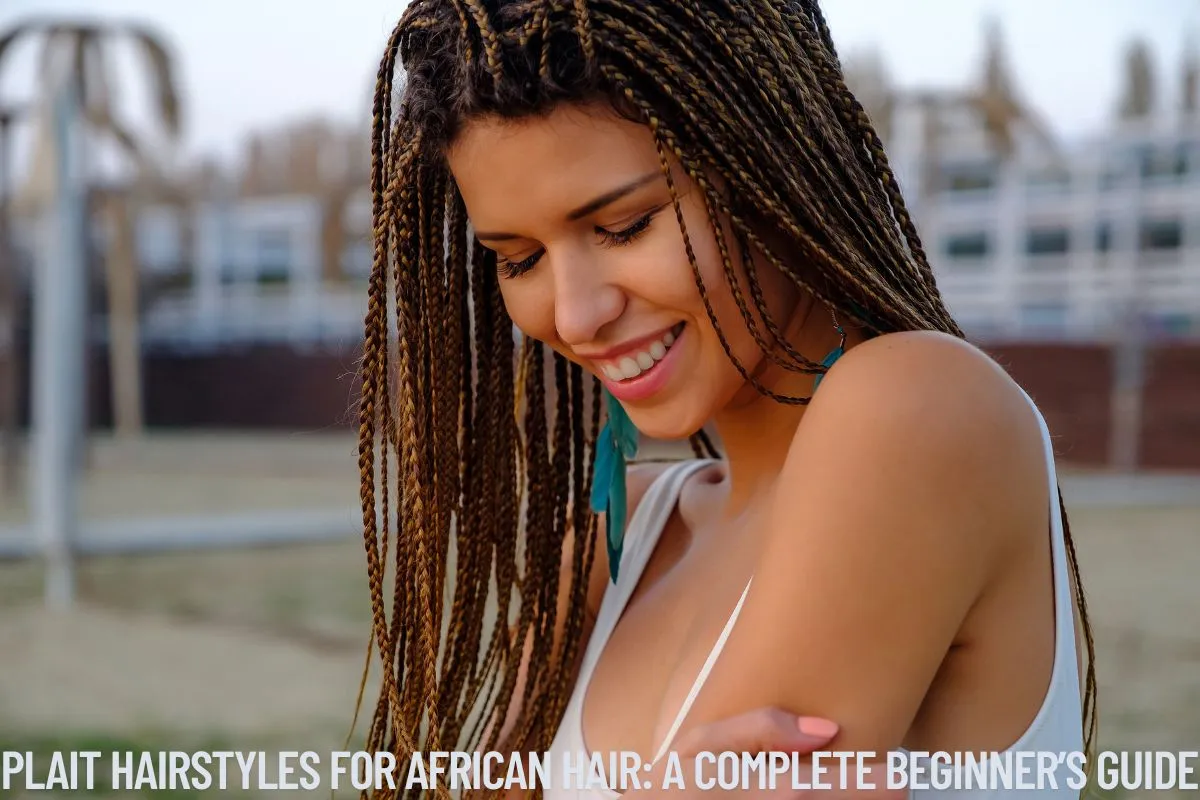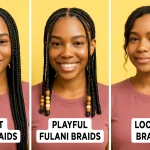Plait hairstyles have been part of African culture for centuries. They are beautiful, protective, and versatile. From traditional cornrows to modern box braids, plaits are more than just hairstyles—they are a way of life. They tell stories, showcase heritage, and allow people to express their style.
The first time I got my hair plaited, I was about 10 years old. My aunt sat me on a wooden stool, pulled out a jar of hair grease, and patiently parted my thick curls. At first, it felt like forever, but when I looked in the mirror, I couldn’t stop smiling. My neat braids made me feel proud, stylish, and ready to show off at school.
In this guide, I’ll walk you through different types of plaits, how to style them, cost comparisons, and even tips for short natural hair.
What Are Plaits in Hair?
Plaits are sections of hair that are woven together. They can be simple three-strand braids, intricate cornrows, or long extensions. In African culture, plaits are more than style—they also serve as protection. They keep natural hair safe from breakage, dryness, and tangles.
Plaits can be:
-
Protective: Keeps natural hair tucked away.
-
Expressive: Allows creativity through patterns, colors, and lengths.
-
Practical: Lasts for weeks with minimal upkeep.
What Is the Best African Braid Style?
There’s no single “best” style. It depends on your lifestyle, face shape, and hair goals. But here are some popular and timeless choices:
1. Box Braids
-
Small or large square-shaped braids.
-
Can be styled into buns, ponytails, or left free.
-
Lasts 6–8 weeks with care.
2. Cornrows
-
Braids close to the scalp in rows.
-
Can be straight, curved, or patterned.
-
Low-maintenance and neat.
3. Fulani Braids
-
Inspired by West African Fulani culture.
-
Usually have beads and middle parting.
-
Stylish and cultural.
4. Twist Braids
-
Two strands twisted instead of three.
-
Faster to install than box braids.
-
Lightweight and elegant.
5. Ghana Braids (Feed-In Braids)
-
Start thin at the front and grow thicker.
-
Bold and eye-catching.
When I tried box braids for the first time, I was amazed at how versatile they were. I wore them to a wedding in a sleek bun one weekend and then styled them loose for a casual outing the next. That flexibility made me appreciate the beauty of plaits even more.
Which Hairstyle Can I Plait With My Natural Hair?
If you don’t want to add extensions, there are still many beautiful plait styles you can do with your own hair.
-
Flat Twists: Easy to do at home, works well for short or medium hair.
-
Simple Cornrows: Can last a week and help stretch natural curls.
-
Mini Braids: Small plaits that can be left in for 2–3 weeks.
-
Halo Braid: A crown-like braid wrapped around the head.
When I was in college, I often did flat twists before bed. Not only were they protective, but when I unraveled them in the morning, my hair had a soft, wavy look. It felt like having two styles in one.
How to Plait Short African Hair?
Short hair doesn’t mean you can’t plait it. With patience and the right technique, even short curls can be styled.
Tips for Plaiting Short Hair:
-
Moisturize First: Dry hair breaks easily.
-
Use Gel or Edge Control: Helps grip short strands.
-
Start Small: Tiny sections hold better.
-
Consider Extensions: If hair is too short, you can add braiding hair for length and grip.
-
Go Professional: Skilled braiders can handle very short hair.
I once had my hair cut too short and thought plaits were impossible. But a friend encouraged me to try cornrows. With a little gel and patience, I got neat braids that boosted my confidence.
Cost Comparison: Plait Hairstyles
Plait styles vary in price depending on location, length, and complexity. Here’s a rough breakdown:
| Style | Time to Install | Duration | Approx. Cost (USD) |
|---|---|---|---|
| Simple Cornrows | 1–2 hours | 1–2 weeks | $20–50 |
| Box Braids (Medium) | 4–6 hours | 6–8 weeks | $100–200 |
| Jumbo Twists | 2–3 hours | 4–6 weeks | $60–120 |
| Fulani Braids | 3–5 hours | 4–6 weeks | $80–150 |
| Ghana Braids | 3–5 hours | 4–6 weeks | $80–140 |
When I was working part-time, I couldn’t always afford salon prices. So I learned to do basic cornrows myself. It wasn’t perfect at first, but over time, I saved money and gained a skill.
Grooming and Maintenance Tips
Plaits last long, but they still need care. Here are easy tips:
-
Moisturize Your Scalp: Use light oils like coconut or jojoba.
-
Protect at Night: Wear a satin scarf or bonnet.
-
Wash Gently: Dilute shampoo in water and apply to your scalp with fingertips.
-
Avoid Heavy Products: They cause buildup and make braids look old fast.
-
Don’t Keep Too Long: 6–8 weeks maximum to avoid breakage.
Why Plait Hairstyles Are Trending Now
-
Low Maintenance: Perfect for busy lifestyles.
-
Protective: Keeps natural hair healthy.
-
Stylish: Can be casual or formal.
-
Cultural Pride: More people are embracing natural hairstyles.
-
Social Media Influence: Instagram and TikTok make creative braid styles popular.
Final Thoughts
Plait hairstyles for African hair are timeless. They connect us to culture while giving us modern style options. Whether you choose cornrows, box braids, or twists, plaits offer beauty, protection, and versatility.
For beginners, start small. Try simple cornrows or twists before moving on to more complex styles. And don’t worry if your first attempt isn’t perfect—every braid tells a story, even the messy ones.
The beauty of plaits is that they fit everyone: men, women, kids, short hair, or long hair. Once you find the style that suits you, you’ll see how plaits are not just a hairstyle—they’re a statement of pride and creativity.
I still feel the same joy today as I did on that stool years ago, when my aunt first braided my hair. Plaits are more than hair—they’re part of who I am.




